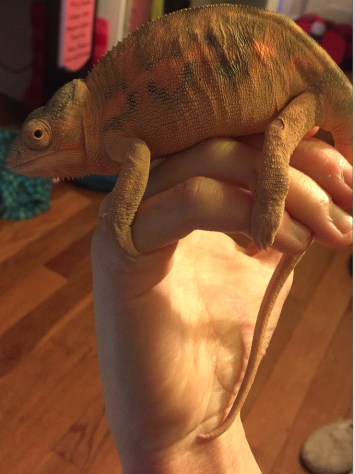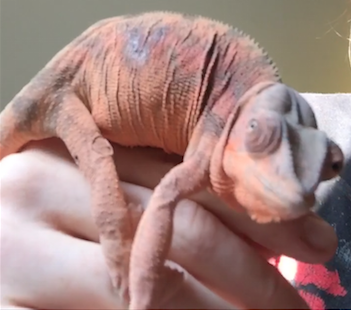Navigation
Install the app
How to install the app on iOS
Follow along with the video below to see how to install our site as a web app on your home screen.
Note: This feature may not be available in some browsers.
More options
You are using an out of date browser. It may not display this or other websites correctly.
You should upgrade or use an alternative browser.
You should upgrade or use an alternative browser.
Male or Female?
- Thread starter sam914
- Start date
fluxlizard
Avid Member
Looks like a female.
What happened to her back?
What happened to her back?
sam914
New Member
That is what I thought.Looks like a female.
What happened to her back?
Her back is actually another thing I was going to ask the forum about.
This is a mark that I noticed after her last shed. That particular spot seemed to take longer than the rest of her skin to shed, and when it finally did, that mark has been there ever since.
She has fallen a couple of times in her cage that I saw, but got right back up and started climbing and did not appear to be in any distress afterwards.
Is this something that I should be concerned about?
There did not seem to be a change in her temperament or habits after the fall nor the shed.
sam914
New Member
Thank you for your input.. that is actually my urgency with questioning her gender recently.You have a female there. Get her a laying bin immediately set up. It looks to me as if she could be ready to lay - very plump.
I had never done my research on females, because I was told she was a male. But now I've been researching females and shes been displaying all of the behaviors of a cham close to laying.
I actually set up a laying bin today, but she seems pretty stressed out about it and does not want to go near it. I'm becoming pretty worried that she may become egg bound, do you have any suggestions on how to handle this?
fluxlizard
Avid Member
That looks like a possible burn on her back. Can't tell from photos for sure, but also looks like something may be going on along her spine.
Burns are usually caused by a badly designed thermal gradient within the enclosure- the background temp may be too cool for the heat light, encouraging the lizard to stay too long under the lamp trying heat it's core, meanwhile burning the surface. They use core temperature for thermoregulatory behavior, not surface, so it can be easy to burn the skin.
The solution is to either provide a more gradual temperature gradient in the enclosure (rather than a "hot spot" within a cool enclosure), and/or a cooler basking area (by raising the lamp off the cage or lowering the wattage of the bulb).
Burns are usually caused by a badly designed thermal gradient within the enclosure- the background temp may be too cool for the heat light, encouraging the lizard to stay too long under the lamp trying heat it's core, meanwhile burning the surface. They use core temperature for thermoregulatory behavior, not surface, so it can be easy to burn the skin.
The solution is to either provide a more gradual temperature gradient in the enclosure (rather than a "hot spot" within a cool enclosure), and/or a cooler basking area (by raising the lamp off the cage or lowering the wattage of the bulb).
sam914
New Member
Thank you so much for that, I never would have guessed it was because of that! There were times throughout the winter where my home got a bit cold, so that actually makes a lot of sense.That looks like a possible burn on her back. Can't tell from photos for sure, but also looks like something may be going on along her spine.
Burns are usually caused by a badly designed thermal gradient within the enclosure- the background temp may be too cool for the heat light, encouraging the lizard to stay too long under the lamp trying heat it's core, meanwhile burning the surface. They use core temperature for thermoregulatory behavior, not surface, so it can be easy to burn the skin.
The solution is to either provide a more gradual temperature gradient in the enclosure (rather than a "hot spot" within a cool enclosure), and/or a cooler basking area (by raising the lamp off the cage or lowering the wattage of the bulb).
Similar threads
- Replies
- 6
- Views
- 2K
- Replies
- 35
- Views
- 5K


